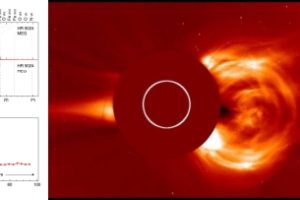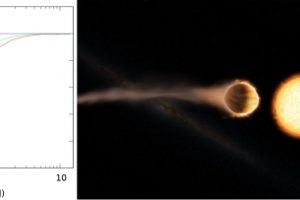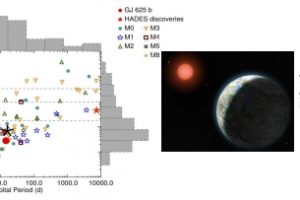Experiments demonstrate where organic molecules form in space

In the last years, several organic molecules, some of which of prebiotic interest, have been observed in different astronomical environments. For instance, Acetonitrile CH3CN was detected in the molecular cloud Sag B2 and in the protostar MWC480; formamide (a building block for sugars and amino-acids) was detected in some outer galaxies and in the protostar SVS13-A (in this case together
» Read more








